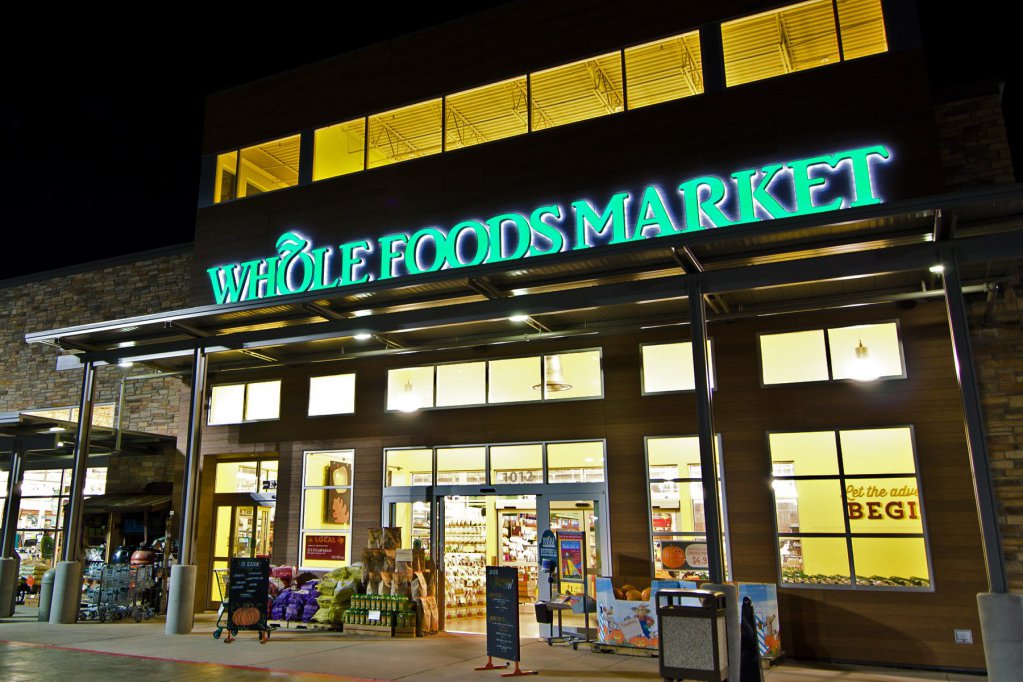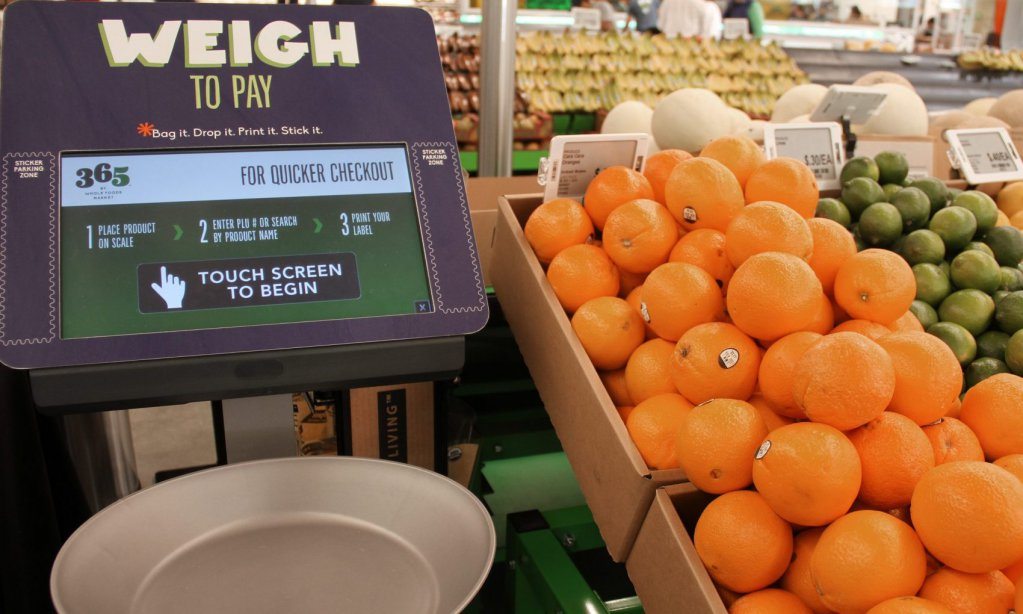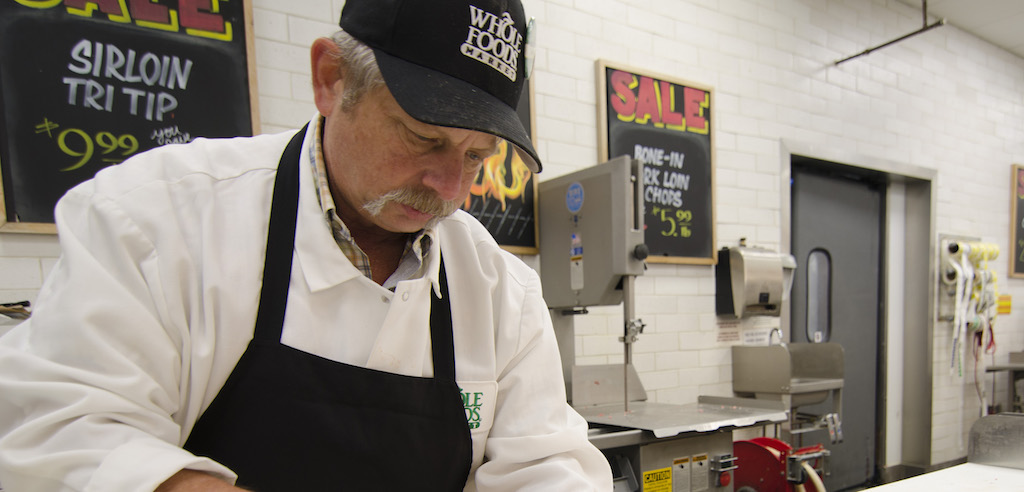
Whole Foods Market
Whole Foods is back in the news, as an activist investor announced that it had taken a significant stake in the struggling grocer, and analysts and gurus all over the spectrum instantly weighed in on what was happening and why. Didn’t have time to read all the coverage? No worries. We’ve put together this cheat sheet.
What happened? On March 29, Jana Partners, a hedge fund, filed a Schedule 13D with the Securities and Exchange Commission, announcing that it and five private individuals had collectively acquired 27,882,035 shares of Whole Foods Market stock (including options to purchase 3,535,000 shares) for approximately $721.2 million. The acquisition gave them control of about 8.8 percent of WFM’s outstanding shares. (An investor has to file a 13D any time its holdings in a single class of stock in a publicly traded company hit 5 percent.)
The group’s intent, according to the filing: to have discussions with Whole Foods’ board and management about boosting profits; changing the board and senior management; fixing the real estate strategy; and working on a whole range of operating issues, including customer loyalty and analytics, category management and analytics, technology and digital capabilities, procurement and buying practices, pricing strategies and value proposition communication, online offerings, in-store execution, inventory management, stocking practices, signage, private label program strategy, and, well, everything.
Just to be clear, “everything” includes the strategy many commentators think is the real point: Selling the company.
Why sell? Because Whole Foods has deep problems, and it’s not obvious that solving them piecemeal will work. A sale gets the investors their money and puts the burden of fixing the company (or breaking it up for parts) on someone else’s shoulders.
 Whole Foods
Whole Foods What’s wrong with Whole Foods? Wasn’t it growing like gangbusters? It was growing quickly. But not anymore. Over the past few years, sales have flattened and profits have declined. Barclay analyst Karen Short recently reported that Whole Foods had lost as many as 14 million customers in the last six quarters. Same-store sales dropped 2.4 percent last year and are expected to drop another 2.5 percent this year. It’s been bad year for the grocery business, but a conventional competitor like Kroger was able to grow same-store sales by 1 percent last year—partly by dint of stealing customers from Whole Foods.
As for what’s wrong, the answer depends on what you think Whole Foods is—or should be. If it’s a conventional big grocery chain, it has all the problems Jana Partners pointed out: It’s not very good at distribution, analytics, marketing, pricing, customer service, you name it. It’s still behaving like it owns the organic space, and it doesn’t anymore.
If the idea is that Whole Foods should be a high-end, high-price grocer for wealthy consumers concerned about health and the environment, it needs to build a much stronger case for itself. Organic is everywhere today, and virtually everyone is charging less than Whole Foods. Is there a market for a ramped-up “Woke Foods”? I wouldn’t count on it.
A third alternative: Go head-to-head with Trader Joe’s for a younger, more convenience-oriented market. That was kind of the point of WFM’s lower-price 365 stores. But a handful of stores and a stalled expansion plan don’t translate very directly into growth. And as a publicly traded company, Whole Foods has to grow or die.
 Whole Foods
Whole Foods What’s Jana Partners, and why should Whole Foods listen to them? Jana Partners is a hedge fund founded in 2000 by Barry Rosenstein. The firm is noted as an activist investor—that is, it identifies companies that seem to be underperforming for specific, identifiable reasons, and it presses management to correct the problems.
Activist investors typically have a few tools at their disposal. They may have expertise that management actively welcomes. (In the case of Jana, it has hired on a pair of potential consultants in the form of former New York Times columnist Mark Bittman and Diane Dietz, CEO of skincare company Rodan & Fields, formerly chief marketing officer of Safeway; Jana has required them to buy their own stock in WFM so they have “skin in the game.”) They can rally shareholder opinion in their favor, potentially even launching a proxy fight to oust directors or management. (The 13D includes a contract between Jana and three potential board candidates: Glenn Murphy, founder and CEO of FIS-Holdings, an investment firm; Tad Dickson, former chairman and CEO of Harris Teeter Supermarkets; and food and retail consultant Meredith Adler.) And if all else fails, they can sell out, perhaps losing some money on the deal, but very likely depressing the company’s stock price.
Jana has largely been successful over the years, but it has had its own share of problems in the past few years. (One you might have heard of: Jana tried to get Qualcomm to break itself up. The company refused and suffered share price losses of 50 percent or so.)
So will Whole Foods and its notoriously feisty founder and CEO John Mackey get in line? I wouldn’t count on it. And though investors can’t be happy with how far the stock has fallen, some, as the Wall Street Journal points out, are committed to the company’s ideals (whatever those are) and won’t necessarily back a proposal that turns WFM into a conventional retailer.
Which leads us again to the idea of a sale.
 Whole Foods
Whole Foods Who’d want to buy Whole Foods? There’s more than one reason to buy a company like Whole Foods. On the one hand, maybe you have access to resources and skills that the target company needs to be more successful. On the other hand, maybe the target has assets that you can use to improve your own business, whether the target survives or not.
From both of those perspectives, there’s a lot of talk about Kroger buying WFM. Certainly Kroger has scale and skills in all of the things that Whole Foods lacks—it’s strong on logistics and marketing, and it’s got strong management and data analytics. It could take on Whole Foods as a specialty brand and quite possibly make the whole thing work. The problem is that it’s not at all obvious that a high-end organic store could grow strongly enough to make it worth the price Jana is going to want. And, realistically, Kroger is a good part of the reason Whole Foods is in trouble. Whole Foods has some good real estate in areas of the country where Kroger is weak, but there are cheaper acquisitions Kroger could make that wouldn’t come with the “whole paycheck” baggage Whole Foods carries.
Other candidates? Celebrity TV stock picker Jim Cramer thinks the obvious buyer is a European company that wants to take on Trader Joe’s in Europe. Meanwhile, Bloomberg just reported that Amazon looked seriously at Whole Foods last fall as a way to kickstart its own move into groceries. (The news caused WFM stock to rise more than 3 percent—on top of a roughly 10 percent rise when Jana’s stake was announced.) Whole Foods under Amazon would potentially be a very different store—more tied to the Internet, more about convenience and delivery. But would Whole Foods bring enough to the party to make it worthwhile?
Well, maybe. It’s not that I can’t picture Whole Foods being sold. I just have a hard time seeing it sold for the kind of dollars that will make Jana much of a profit. And Whole Foods’ problems are so difficult—and tied to external, uncontrollable market forces—that it’s hard to see a hedge fund staying the course to rebuild the company almost from scratch. A small profit achieved quickly is worth more to most investors than a highly uncertain profit that takes a lot of time and effort to achieve. So I expect Jana to push for a deal.
And then what happens? Why, with any luck, the business pages become fun to read again, as Mackey and his board loyalists push for their vision of the company, which every analyst in America will promptly find impossible and wrong. For a bonus, maybe Jana will launch a proxy fight, and we’ll get to see how loyal the investors are. It’s no sure thing. Some of these people have held on despite grisly losses.
And honestly, if a proxy fight ends with a “Let Whole Foods be Whole Foods” decision, they’re not wrong: If you can get people whose money you have flushed down a deep hole to keep backing your vision of a better kind of supermarket, maybe you’ve screwed everything else up but, brother, you’ve created a brand.










